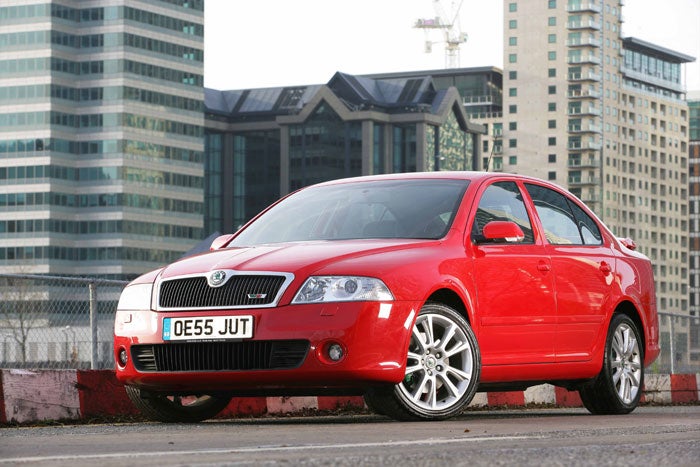The wheel deal: Skoda drives off with the title of Britain's best-loved motor

Why does a Skoda have a double rear window heater? So you can keep your hands warm while you're pushing it. How do you double the value of a Skoda? Fill its tank. What's the difference between a Skoda and a ticket to an Oasis concert? The Oasis tickets go faster.
But that's enough of the old Skoda jokes. The car that once made the Volkswagen look like a slick piece of stylish machinery has become the motor of choice for the knowing driver.
The Skoda Octavia has beaten luxury cars such as the BMW and the Mercedes to take first place in the Driver Power 2008 survey, released yesterday by Auto Express. It is the fifth successive year that a Skoda model has finished in the top five.
More than 32,000 members of the public voted in the poll that asked what makes it a pleasure or a pain to drive their car, including reliability, build quality, running costs, performance and ease of driving.
Skoda's success has been achieved through a commercial tie-in that initially irked Czechs with memories of the war, by becoming part of the Volkswagen group. The merger may have been politically controversial, but it has been a commercial triumph. Instead of disappearing like other car brands produced by state-owned factories in the old communist bloc, which could not survive without state support, the Skoda now has a solid army of owners ready to declare that it is the best model on the road.
Oddly, Emil Skoda, after whom the model is named, was not a car designer or manufacturer, but a Czech businessman who bought an arms factory in 1899, and built it into one of the biggest in its market.
When Hitler ordered the invasion of Czechoslovakia, one of his main objectives was to seize the Skoda works, which was immediately renamed in honour of Hermann Goering, and put to work supplying the Nazi war machine. Then the Red Army arrived, and the works was put into state ownership.
Skoda cars have always had a reputation for reliability but when gloom descended on Czechoslovakia after the Soviet occupation in 1968, its designers seemed incapable of coming up with anything new. That is when the Skodas became the butt of jokes.
In 1987, an Italian designer at last helped the factory produce a new model, the Favorit, that was technically almost up to Western standards, and therefore very popular within the communist bloc. After communism collapsed in 1989, Czechoslovakia's industry was open to privatisation. The government looked around for a foreign, private sector partner for Skoda, and settled on Volkswagen – a choice that did not please a lot of older Czechs.
But the injection of VW's design and marketing expertise was the saving of the company, helped by a clever advertising campaign which took the car's comic reputation head on. In one British TV ad, a new employee on the production line is charged with fitting Skoda badges on bonnets, and stands back in disbelief because the models coming off the line looked so good that they could not be Skodas. UK sales increased rapidly.
David Johns, Auto Express's editor-in-chief, who compiled the survey, said: "The Octavia is a deserving winner. With great reliability and a strong set of results across our judging categories it will be tough to beat in next year's survey."
The survey also produced a success for the West Midlands-built Land Rover Discovery, which achieved second place.
No joke: Good Skodas through the ages
1000MB (1964)
This model shared its basic rear-engined layout – but not much else – with a more distinguished Czech car, the Tatra. The innovative and intriguing styling was like nothing else that had come before.
Rapid (1986)
The most convincing of the Communist-era, rear-engined Skodas. Semi-trailing arms instead of swing axles at the back were the secret. The Coupe bodywork was one of its distinguishing features.
Favorit (1988)
Unremarkable car, remarkable achievement; a competitive product from a planned economy. VW liked it so much they bought the company. Revamped as the Felicia, it formed the backbone of the range until the VW-based models were ready for the marketplace.
Superb (2002)
The name is closer to the truth than you might think. A range of nifty features includes a hole in the back of the front seat which provided a convenient rear legroom extender.
Yeti (2005)
MPV concept first seen at the Geneva Motor Show in 2005, this 4x4 with the silly name is set to go on sale next year. It shares its underpinnings with the Volkswagen Tiguan, and should rival the Suzuki Jimny and Nissan Qashqai.
Subscribe to Independent Premium to bookmark this article
Want to bookmark your favourite articles and stories to read or reference later? Start your Independent Premium subscription today.

Join our commenting forum
Join thought-provoking conversations, follow other Independent readers and see their replies